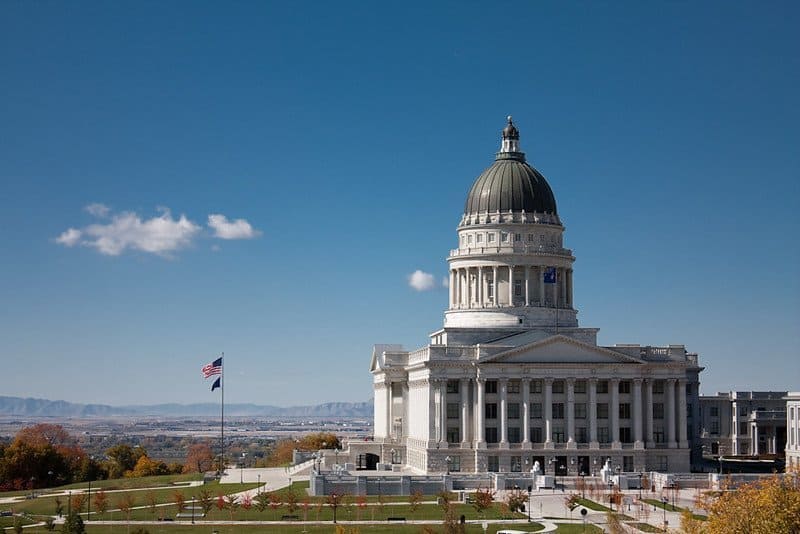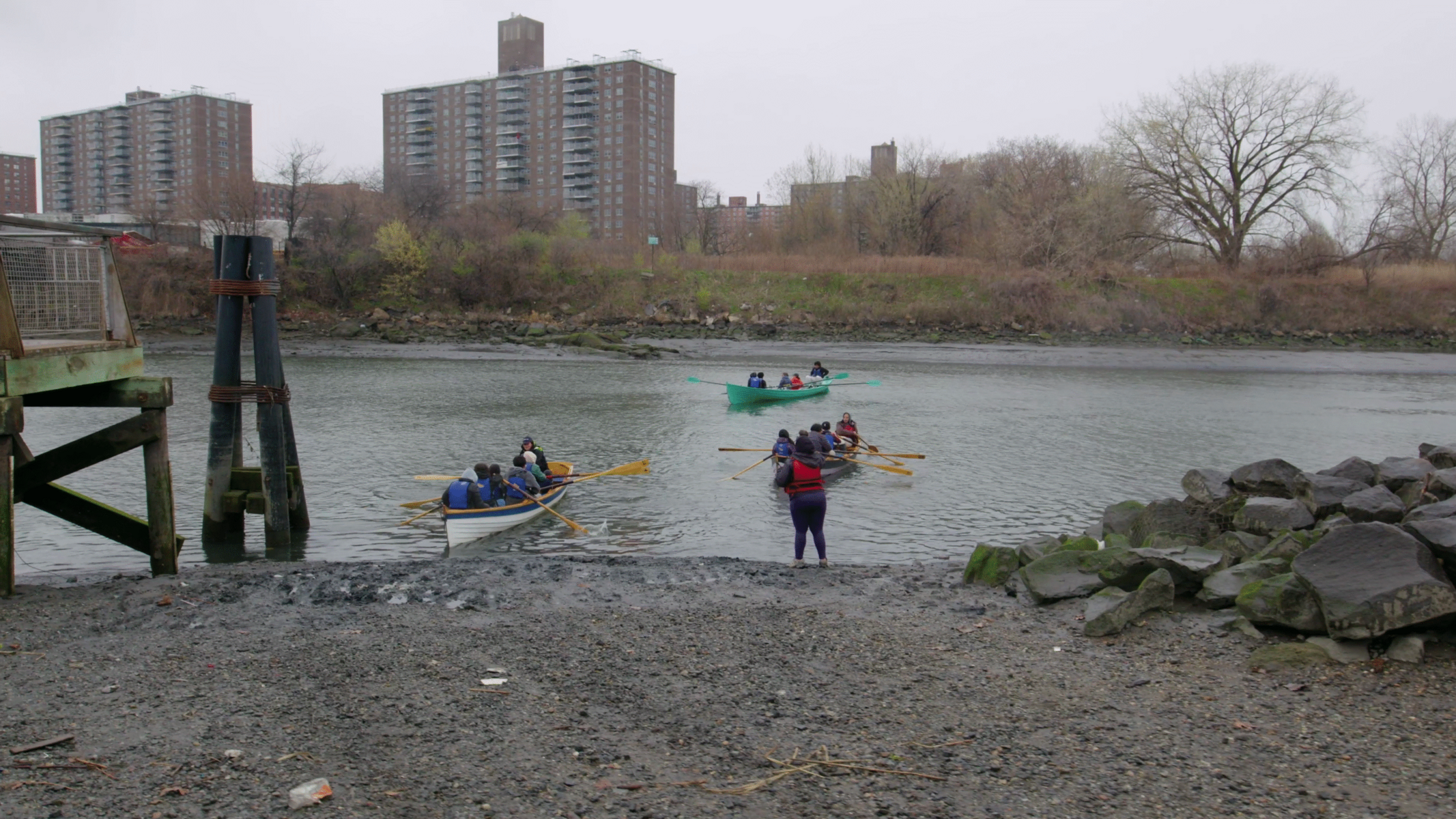South of Salt Lake City, Utah, there’s an idyllic hilltop neighborhood called Suncrest. It’s only 15 miles from the largest city in the state, but it feels like a quiet mountain town. It also happens to be the place that best illustrates the solution to America’s historically low voter turnout, which the coronavirus outbreak threatens to make even worse by turning the act of voting into a health risk.
While Suncrest feels like one community — it has one Mormon church and one restaurant — it’s divided into two counties: Salt Lake and Utah. Both sides are similar in population size; each is 90 percent white. In the 2016 election, however, they had dramatically different voter turnout rates. Suncrest’s Salt Lake County residents showed up to vote at a rate nearly 18 percentage points higher than their Utah County counterparts.
What made the difference? The two counties used different voting systems. Whereas Utah County voted the old-fashioned way, Salt Lake County switched to conducting its election entirely by mail. Under that system, known as “vote at home,” voters receive their ballots in the mail a few weeks before Election Day and can either mail them back or drop them off at a secure site. In other words, Suncrest offered a natural experiment to compare traditional voting to voting at home.
Usually, an electoral reform is deemed successful if it increases voter participation a few percentage points. The jump in Salt Lake County’s turnout was on a whole other level. And the disparity wasn’t limited to Suncrest. In that same election, 21 of Utah’s 29 counties had switched to vote at home. Those counties had an average turnout rate of nearly nine percentage points higher than those that didn’t. The success of those counties led six of the remaining eight holdouts to try vote at home in the 2018 midterm election, including Utah County. Sure enough, Suncrest’s Utah side turned out eight percentage points higher than it did two years earlier.
That has lessons for the rest of the country. Utah has shown both how to get more people to vote, and how to overcome the political resistance that electoral reforms inevitably run into: by simply allowing counties to opt in when they’re ready.
Other states have also seen success with this opt-in approach. Washington transitioned to vote at home on a county-by-county basis, and Arizona, California and Montana are in the midst of the same process.
If getting more people to vote isn’t enough, the outbreak of the novel coronavirus has made vote at home more essential than ever. Polling places are acutely susceptible to the spread of the disease, as thousands of voters will stand close together in lines and put their hands on doorknobs, pens and touch screens. And the volunteers who work at polling sites are largely senior citizens — those most at risk.
When it comes to COVID-19, vote at home accomplishes two things at once: It takes away the risk of the virus getting transmitted at voting centers, and it mitigates the possibility that voters will not show up to vote out of fear of getting infected.
A grand experiment
In the early 2000s, Utah’s turnout rate was dropping. Lawmakers were concerned about the state’s declining voting rate; they had been getting complaints from constituents that it was hard to leave work on Election Day. So, in 2004, Utah changed the law, allowing any registered voter to request an absentee ballot. No excuse needed. Legislators may not have realized how consequential this decision would prove to be.
At the same time, Utah’s electronic voting machines were nearing obsolescence. The cost to buy new machines was exorbitant, and counties would have to buy even more of them to reduce lines at polling places. And other states were finding that those machines were difficult to maintain, and plagued with security concerns.
One official had an idea. Rozan Mitchell, then election director of Salt Lake County, the largest in the state, noted that one-third of her county’s voters were already signed up for permanent absentee voting. Mitchell argued that the state should start conducting elections entirely by mail, rather than spending millions of dollars to keep on doing things the same way and getting the same lackluster results. As Mitchell noted, Utah was already using that system for a huge share of its voters. “It was like running two different elections,” she said.
As the idea percolated, county officials started nudging legislators to give them more freedom to try vote-at-home elections. State Representative Steve Eliason had been thinking along the same lines. A constituent had brought him election data from Oregon, which had been using vote at home since the 1990s. The lawmaker then toured an Oregon county’s election offices and came home impressed. In 2012, he introduced a bill to give Utah counties the option to run all-mail elections.
To his surprise, he faced little resistance from either party. Generally, any major election reform is hard fought, and it’s typically difficult to convince incumbent politicians to alter a system that has benefited them. In this case, however, both parties thought they had something to gain. Republicans thought vote at home would boost turnout among older, rural voters, and Democrats believed it might boost turnout among younger urban or suburban voters.

In March 2012, the Utah General Assembly passed the bill and the governor signed it into law. But most county clerks felt there wasn’t enough time before the November elections to switch to an all-mail system. Only one county across the state opted in: Duchesne, a small and rural county in northeast Utah. The results there caused the rest of the state to take notice: Duchesne’s turnout among active registered voters was six percentage points higher than the average for all Utah counties that election.
Soon, other counties picked up the idea. As they did, the more they discovered just how much people preferred to vote from the comfort of their homes.
The larger counties, however, were more reluctant. Election officials didn’t want to force tens of thousands of voters into a new system. So Mitchell embraced the “try before you buy” logic, creating vote-at-home pilot programs for cities within Salt Lake County. Meanwhile, more jurisdictions throughout the state were also making the switch. The cities and counties that used vote at home in their 2015 municipal elections increased their voter turnout average by 39 percent. After the success of those elections, Salt Lake County — the largest in Utah — made the decision to go all in, setting the stage for the Suncrest experiment.
All in
If you ask people who live in Suncrest, they’ll tell you they appreciate the new system. “I liked being able to just mail it in,” Julie Humphrey, a 61-year-old retiree, said. “I was able to look up the candidates and figure out what they stood for.”
Cory Jaynes, a 40-year-old project manager, agreed. “It was great,” he said. “[I] didn’t have to go to the polling place. Sometimes you go in there and you want to be able to research the ballot initiatives or the candidates. It was nice to be able to look them up. When you’re in a voting booth, you don’t really have too much of an opportunity to do that.”
In 2020, Utah will become just the fourth state in the nation to run a statewide all-mail election, after Oregon, Washington, and Colorado, all of which have seen higher turnout and savings to the taxpayers. Pew Charitable Trusts found that, since 2014, Colorado has saved $6 per voter. (Hawaii will also run its first statewide vote-at-home election in November.)
For many states, it’s too late to mandate vote at home statewide before November. Most counties don’t have the specialized equipment or the trained workforce necessary to count and review vast numbers of mailed-in ballots, and won’t be able to build that capacity in the next eight months. “You can’t go from zero to 60 in a single election cycle,” said Phil Keisling, who implemented vote at home in Oregon as secretary of state in the late 1990s and later founded the National Vote at Home Institute.
But some counties do have the capacity. States could allow localities to opt in if they’re able.
This strategy has proved more effective than forcing a statewide vote-at-home transition. Montana tried to pass a ballot initiative to enact vote at home, but activists couldn’t garner enough signatures. Legislators in Alaska introduced a bill that would have mandated vote at home statewide, but it didn’t pass. And a 2002 Colorado ballot initiative likewise failed to pass. Advocates in Colorado then switched to an incremental approach. The state began experimenting with vote at home for primary and special elections. After seeing higher levels of turnout and saving money, the legislature expanded the practice statewide in 2014.
Officials have already recognized the need to prevent a public health crisis from crippling a presidential election. Utah shows that a solution is already out there. It just also happens to have even broader lessons beyond how to vote during a pandemic.
This story originally appeared in Washington Monthly. It is part of the SoJo Exchange of COVID-19 stories from the Solutions Journalism Network, a nonprofit organization dedicated to rigorous reporting about responses to social problems.








